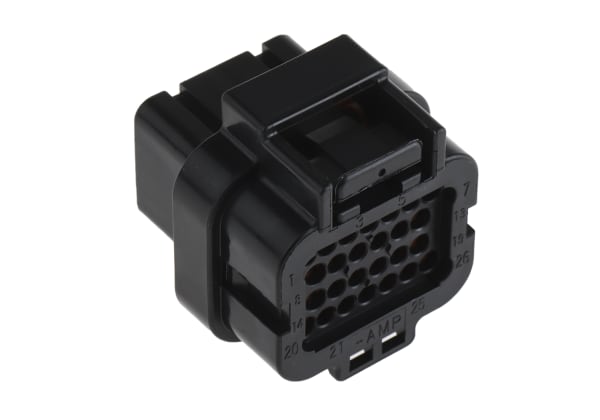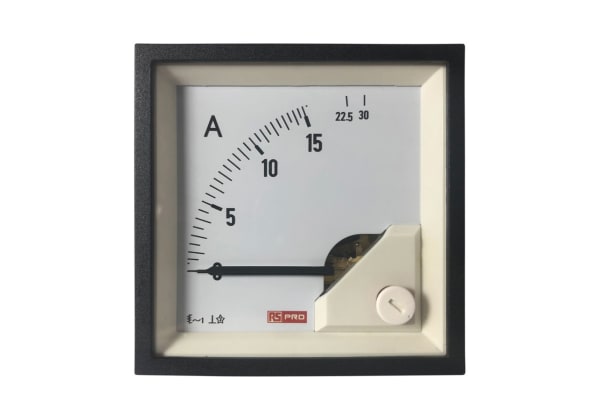- Published 20 Dec 2024
- Last Modified 3 Jan 2025
- 11 min
Automotive & Car Fuse Types: A Comprehensive Guide
This guide explains what car fuses are, their functions, how to inspect them, replace them safely, and choose the correct type for your vehicle.

What are Car Fuses?
Car fuses are safety components that protect a vehicle's electrical systems from damage. When too much current flows through, the fuse breaks the circuit, preventing potential damage to sensitive components or fires. Car fuses help maintain the safety and reliability of your vehicle's electrical system.
Working Principle of a Car Fuse
Car fuses are designed to protect electrical circuits by breaking the connection when current exceeds a safe level. When an excessive current flows, the metal strip inside the fuse heats up and melts, thereby opening the circuit and stopping the flow of electricity. This prevents overheating and damage to other electrical components. By isolating faults, car fuses help maintain the overall safety and stability of the vehicle's electrical system, ensuring that issues in one part of the system do not impact others.
Function of Car Fuses
Car fuses protect electrical components by interrupting excessive current. When a fuse "blows," it cuts off power to prevent overheating, component damage, or fire. This helps safeguard parts like lights, radios, and engine control units.
What Fuse Do I Need for My Car?

Different vehicles use various types of fuses, such as blade, ceramic, or glass fuses. To determine the right fuse for your vehicle, consult your owner's manual or the fuse box diagram, which will provide the necessary fuse specifications and ratings. It's crucial to use the correct fuse rating to avoid causing damage. Using a fuse with a higher amp rating can lead to serious electrical issues in your car, so always ensure that you match the specified amperage.
Car Fuse Types
Car fuses come in different types, with blade fuses being the most common. Other types include glass tube fuses, Bosch fuses, and Lucas fuses, which are often used in various automotive applications.
Blade Fuses
Blade fuses are flat, plastic-bodied fuses with two metal prongs that plug into the fuse box. They are widely used in modern vehicles due to their ease of installation and their ability to handle a range of amperage ratings. Blade fuses are categorised by size, including mini, standard, and maxi, which determine their current-carrying capacity.
These fuses are colour-coded based on their amperage rating, making them easy to identify and replace. Blade fuses are known for their versatility and are used for various applications, from protecting low-current circuits to high-power systems in vehicles.
Glass Tube Fuses
Glass tube fuses are typically used in older vehicles and consist of a thin metal filament enclosed in a glass tube. This type of fuses are easy to identify due to their transparent casing, which allows you to quickly see if the fuse has blown. They are primarily found in older automotive systems and classic cars.
Bosch Fuses
Bosch fuses are cylindrical ceramic fuses that are commonly used in European cars. They feature a distinctive design, with conical ends that fit into specific holders. Bosch fuses are known for their reliability and are often used in vehicles with a European origin.
Lucas Fuses
Lucas Fuses are also used in classic British cars, such as those manufactured by MG, Triumph, and Jaguar. Lucas fuses have different ratings compared to modern fuses, and it is essential to match them correctly when replacing them in classic vehicles to maintain proper circuit protection.
Car fuses are generally located in the fuse box, which is usually found under the dashboard or in the engine compartment. Some vehicles may also have additional fuse boxes located in other areas, such as the trunk or beneath the rear seats, depending on the make and model. Always refer to your owner's manual to find the exact location of the fuse boxes in your vehicle.
Popular brands for car fuses available in Australia include RS Pro, Littelfuse and Eaton, all of which offer reliable options for a wide range of vehicles.
Blade Fuse Mount Types
Blade fuses can be mounted in various ways, each designed to suit specific applications and ensure a reliable connection. The main types of mounts are:
- Fuse Blocks: are made of materials like porcelain, slate, or other refractory substances. They provide excellent heat resistance, making them ideal for environments where high temperatures are expected. Fuse blocks are often used in industrial and heavy-duty automotive applications.
- In-Line Fuse Holders: are designed to protect circuits outside the main fuse box. These holders are typically used when additional fuses need to be added to a vehicle's electrical system. They are convenient for aftermarket installations and modifications, such as adding auxiliary lights or sound systems.
- Dual Slot Fuse Holders: are used to mount multiple fuses in a single holder, allowing for the consolidation of circuits in a compact space. These holders are commonly found in automotive and marine applications where space is limited, and multiple circuits need to be fused together.
- Fuse Clips: are simple, spring-loaded clips that hold the fuse in place. They are often used for easy installation and removal of fuses, making them ideal for applications where fuses need to be replaced frequently or where quick access is required.
Blade Fuse Colour Coding System
Blade fuses are colour-coded by amperage rating, making it easy to identify the correct fuse for your needs. Below is a list of the colour codes and their corresponding amperage ratings:
- Black: 1A
- Grey: 2A
- Violet: 3A
- Pink: 4A
- Tan: 5A
- Brown: 7.5A
- Red: 10A
- Blue: 15A
- Yellow: 20A
- Clear: 25A
- Green: 30A
- Orange: 40A
- Red: 50A
- Blue: 60A
- Tan: 70A
- Clear: 80A
Always refer to a colour chart when selecting a fuse to ensure the proper fitment for your vehicle's electrical system.
Car Fuse Sizes: Blade Fuse Dimensions & Types
Blade fuses come in six primary sizes each designed for different current requirements:
- Micro2: These are the smallest type of blade fuse, characterised by their tall, thin shape. They are typically used in compact electrical circuits.
- Micro3: These fuses are easily identifiable as they are the only type with three terminals instead of two, making them suitable for more complex circuits.
- Low-Profile Mini: These are small and compact, with terminals that do not extend far beyond the main fuse body. They are often used in tight spaces where a compact design is needed.
- Mini: Mini blade fuses feature the same body design as low-profile mini fuses, but the terminals are much longer. These are commonly used in standard automotive applications.
- Regular: These are the standard version of blade fuses and are the second-largest type. They are widely used in various vehicle applications to protect electrical components.
- Maxi: Maxi blade fuses are the largest size available and are designed for high-current applications, such as those found in heavy-duty automotive and industrial equipment.
Below is a table outlining the dimensions, blade groups, and common ratings for each type:
Blade Size | Blade Group | Dimensions (L × W × H) (mm) | Common Ratings (Max Current) |
|---|---|---|---|
Micro2 | APT, ATR | 9.1 × 3.8 × 15.3 | 5, 7.5, 10, 15, 20, 25, 30 |
Micro3 | ATL | 14.4 × 4.2 × 18.1 | 5, 7.5, 10, 15 |
Low-Profile Mini | APS, ATT | 10.9 × 3.81 × 8.73 | 2, 3, 4, 5, 7.5, 10, 15, 20, 25, 30 |
Mini | APM, ATM | 10.9 × 3.6 × 16.3 | 2, 3, 4, 5, 7.5, 10, 15, 20, 25, 30 |
Regular | APR, ATC, ATO, ATS | 19.1 × 5.1 × 18.5 | 0.5, 1, 2, 3, 4, 5, 7.5, 10, 15, 20, 25, 30, 35, 40 |
Maxi | APX | 29.2 × 8.5 × 34.3 | 20, 25, 30, 35, 40, 50, 60, 70, 80, 100, 120 |
How to Inspect Car Fuses

Regular inspection of car fuses is important to maintain vehicle safety and ensure all electrical systems function properly. A multimeter is commonly used for fuse inspection, with two primary modes: continuity mode and ohmmeter mode.
Testing Fuse with a Multimeter: Continuity Mode
In continuity mode, a multimeter is used to check if a fuse is intact. A functional fuse will show continuity, indicating that the circuit is closed and capable of carrying current. A blown fuse, on the other hand, will show no continuity, meaning the circuit is open and the fuse needs to be replaced.
Testing Fuse with a Multimeter: Ohmmeter Mode
Ohmmeter mode measures the resistance of a fuse. A healthy fuse will exhibit very low resistance, allowing current to flow freely. A blown fuse will show high resistance, indicating that the circuit is broken and that the fuse needs replacement.
How to Tell if a Car Fuse is Blown
Blown fuses can often be identified by non-functional electrical components, such as headlights, interior lights, or radios that suddenly stop working. Visually, a blown fuse may have a broken filament or a discoloured window. It is essential to replace blown fuses promptly to prevent further electrical issues.
Common Reasons for Blown Fuses
- Faulty Wiring: Damaged or faulty wiring can lead to short circuits, which create a surge of current that the fuse cannot handle, resulting in a blow.
- Overloaded Circuits: Overloaded circuits often occur when too many devices draw power from the same fuse, causing it to exceed its capacity.
- Malfunctioning Components: Malfunctioning components, such as faulty alternators or defective relays, can also lead to excessive current flow and blow a fuse.
Identifying and addressing the underlying cause is crucial for preventing recurring issues and ensuring the safety of your vehicle. Regular inspection and maintenance of the vehicle's electrical system can help to minimise these risks.
How to Replace a Car Fuse
To replace a car fuse, start by identifying the fuse type and locating the blown fuse. Then, purchase a replacement fuse that matches the type, size, and current rating of the original. Once you have the new fuse, carefully insert it into the appropriate slot in the fuse box, ensuring it’s placed exactly where the blown fuse was removed.
Keep in mind that the process for installing a new fuse can vary depending on the vehicle, so refer to your owner’s manual for specific instructions if needed. After replacing the fuse, test the affected electrical system to confirm that it’s functioning properly. If the issue persists or the same fuse keeps blowing, it could indicate a deeper electrical problem. In such cases, we recommend you seek assistance from a professional mechanic.
Top Tip!
Before replacing a car fuse, turn off the vehicle to prevent electric shock. Use the correct fuse rating from your manual to avoid damage; using the wrong fuse can cause damage. Handle fuses carefully and avoid touching the metal prongs, as skin oils can affect conductivity over time.
How to Change a Car Fuse
- Locate the fuse box or panel.
- Identify the blown fuse.
- Inspect the fuse to confirm it’s blown.
- Purchase a replacement fuse with the same size and rating.
- Remove the old fuse carefully.
- Insert the new fuse securely into place.
- Close the fuse box or panel.
- Test the circuit to ensure the issue is resolved.

How to Remove a Car Fuse
A fuse puller is the ideal tool for safely removing fuses, as it provides a secure grip. If you don't have a fuse puller, regular pliers can be used, but care must be taken to avoid damaging the fuse or the contacts. Grip the fuse securely and pull it straight out to prevent bending or damage. Once removed, inspect the fuse for a broken filament or discolouration, and replace it with a car fuse type that matches the original amperage rating.


